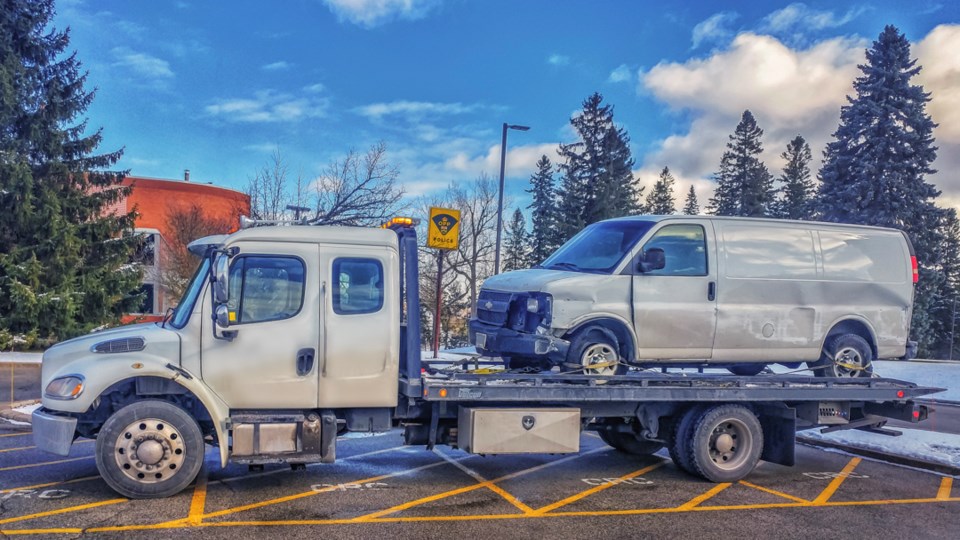It’s wintertime in Canada. That means the roads are getting worse and collisions are becoming part of everyday life.
For most of us, that experience, thankfully, is simply the inconvenience of sitting in traffic behind a wreck waiting for the roads to clear.
For the hundreds of people involved in collisions reported in York Region and South Simcoe area during our last snowstorm, that experience was more than an inconvenience, it was an emergency that required an immediate response.
But what happens when it’s you? What do you do? How do you respond?
First things first, weigh every decision you make while dealing with the aftermath of a collision against the question “If I do this, will I be safe?”
From choosing to exit your vehicle, to approaching the other parties involved or making an agreement to have your vehicle towed to the body shop, make the decision that keeps you safe; physically, legally and financially.
So, what now? The collision just happened, and the dust is starting to settle. Before you do anything, check yourself and your passengers for injuries. If anyone in your car is hurt, call 911 and get help as quickly as possible.
You got lucky, no one in your vehicle is seriously hurt. Take a moment and catch your breath, it’s time to assess what’s happened.
Where are you? Were you paying enough attention to tell someone where to find you?
Who else is involved? Take note of any other cars or pedestrians in the area.
What’s traffic like? Is it safe to get out of your car?
If it is safe to do so, approach the other vehicles involved, taking note of who is driving and if anyone in the other vehicle is injured.
Should you find anyone injured, it is important to note that the Highway Traffic Act states, “Every person in charge of a vehicle…that is involved in the accident shall, render all possible assistance.”
According to the Canadian Red Cross, “One of the simplest and most important ways of providing first aid is to call for help (911).”
If nobody is injured, take a look at the damage. Are the vehicles drivable?
If your vehicle is drivable, “Steer it & Clear it.” For minor collisions, drive the vehicles off the roadway and safely out of the flow of traffic.
If your vehicle is too badly damaged to move on its own, it’s time to call for help.
If you don’t feel safe in traffic, call 911 and ask for an officer to respond. Now is also the time to make arrangements to have your vehicle towed.
Regardless of the amount of damage, you’ll need to get the details of all other vehicles involved in the collision.
“Use your phone to record the other person’s ownership, insurance, their drivers’ licence and the licence plate of the vehicle as well as contact information for the other drivers and any witnesses,” says Eric Andrews, an Insurance Agent with The Cooperators in Bradford.
You might also want to consider getting photos of the scene before any vehicles are moved. This will help when it comes time to deal with your insurance company, as well as allow you to document the other vehicles involved in the collision.
“If it is safe to do so, try to get wide shots that show the collision, the surrounding area and the conditions at that time, medium shots that show the positions of the vehicles relative to each other and detail shots that show the damage on each vehicle,” said Andrews.
Once you’ve got the photos and information you need, unless a police officer on scene says otherwise, it’s your right to decide who will tow your vehicle.
Provincial regulations stipulate that tow truck operators must get your permission before towing your vehicle. They must post their prices publicly and they must disclose if they are getting a kick-back for towing your vehicle to a particular storage facility or repair shop.
For the most part, if you carry collision coverage for your vehicle, most tow operators will bill your insurance directly and no payment will be required directly from you.
If you don’t carry collision coverage, it’s time to call CAA.
CAA will provide membership service for a collision and will tow your vehicle to the shop of your choice or to the Collision Reporting Centre.
If you’re not sure which repair facility to take your car to, follow the guidance of your insurance agent when you call to report the collision. Their list of pre-approved shops have locations in most communities that have already been proven to be reliable and of high quality.
York Region's Collison Reporting Centres
- If your collision occurred in Aurora, King, Markham, Newmarket, Richmond Hill, Vaughan or Whitchurch-Stouffville, report at the Community Resource Centre at 10720 Yonge St., Richmond Hill. Officers are available to take your report from 8 a.m. to 8 p.m., seven days a week.
- If your collision occurred in East Gwillimbury or Georgina, report at #3 District headquarters at 3527 Baseline Road, Sutton. Officers are available to take your report from 7 a.m. to 7 p.m., seven days a week.



